site search
online catalog
SCARCE CONFEDERATE LIGHT ARTILLERY SABER BY THOMAS, GRISWOLD AND COMPANY, NEW ORLEANS, IN VERY GOOD CONDITION

Hover to zoom

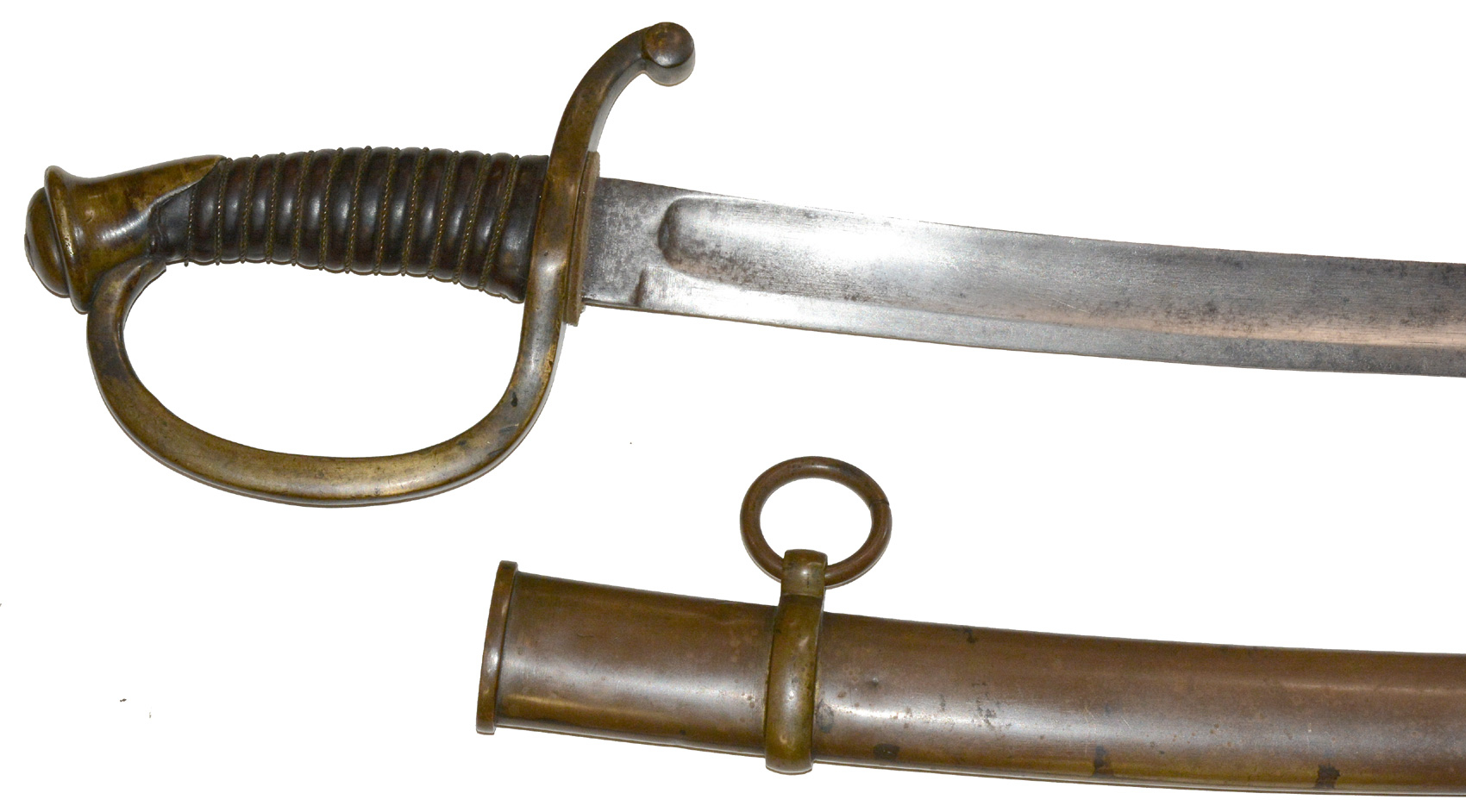

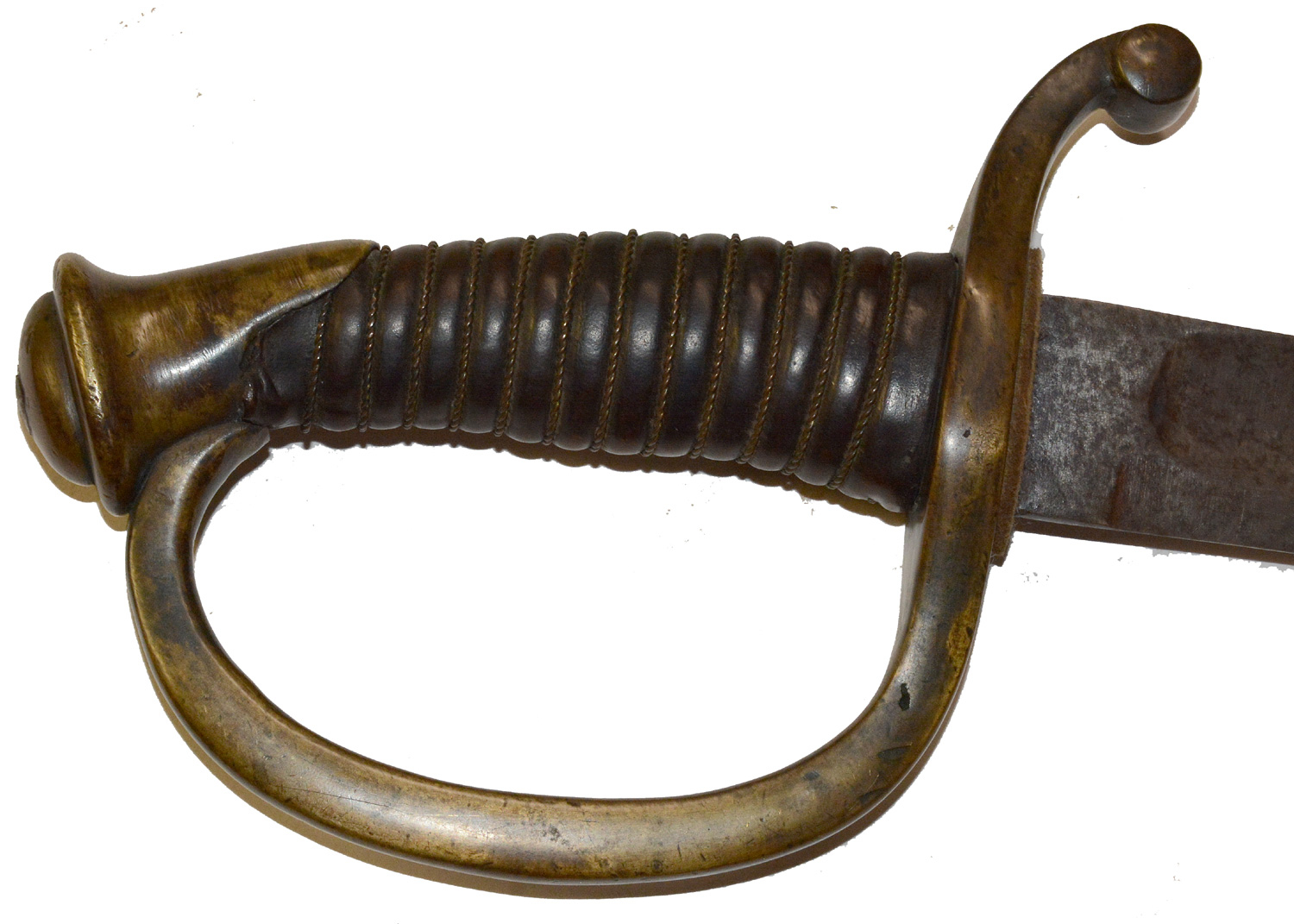
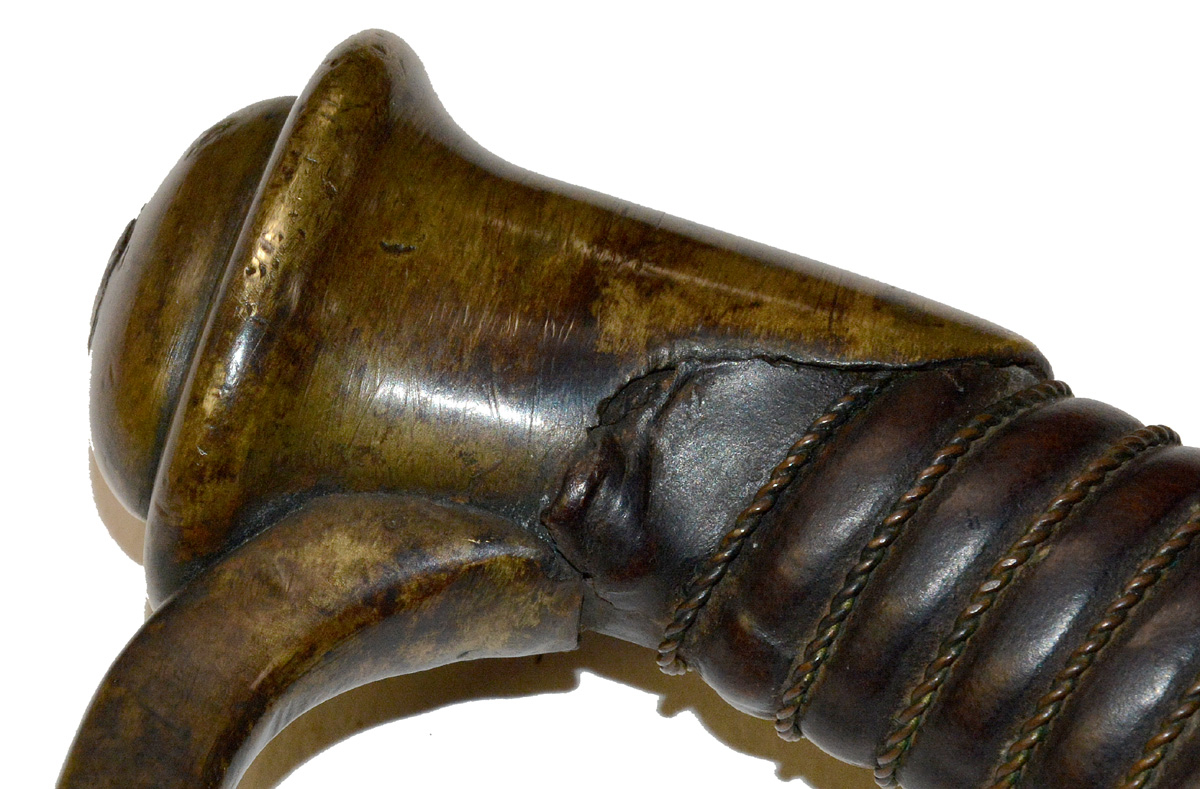
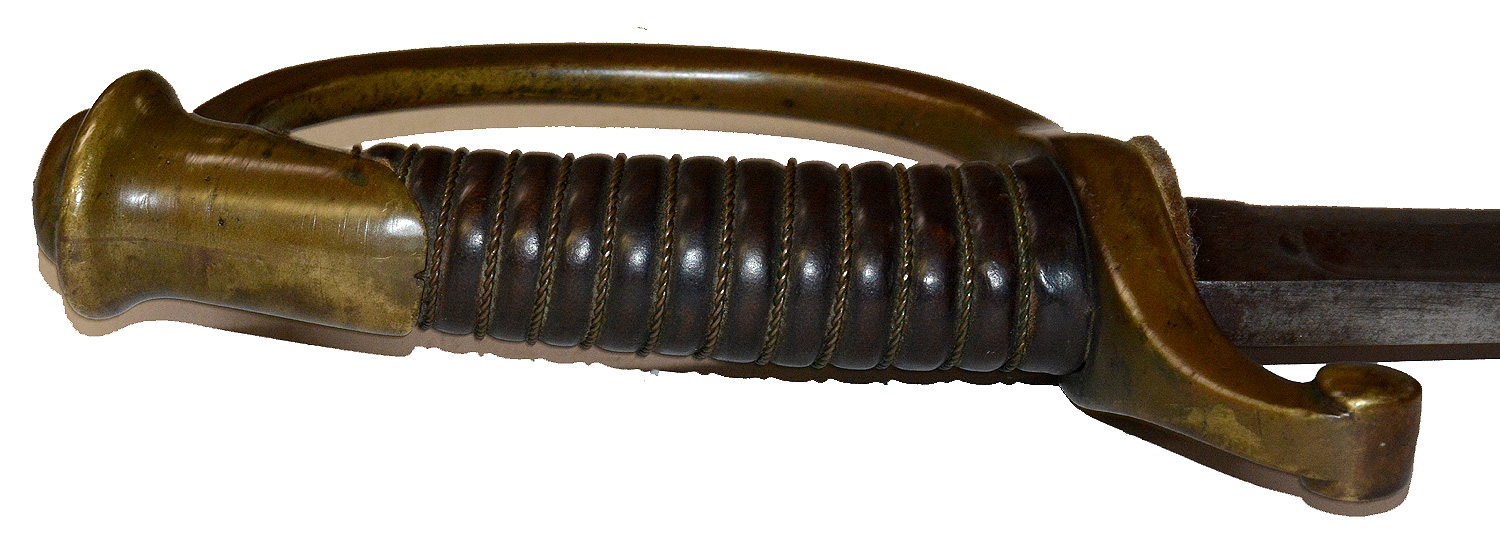
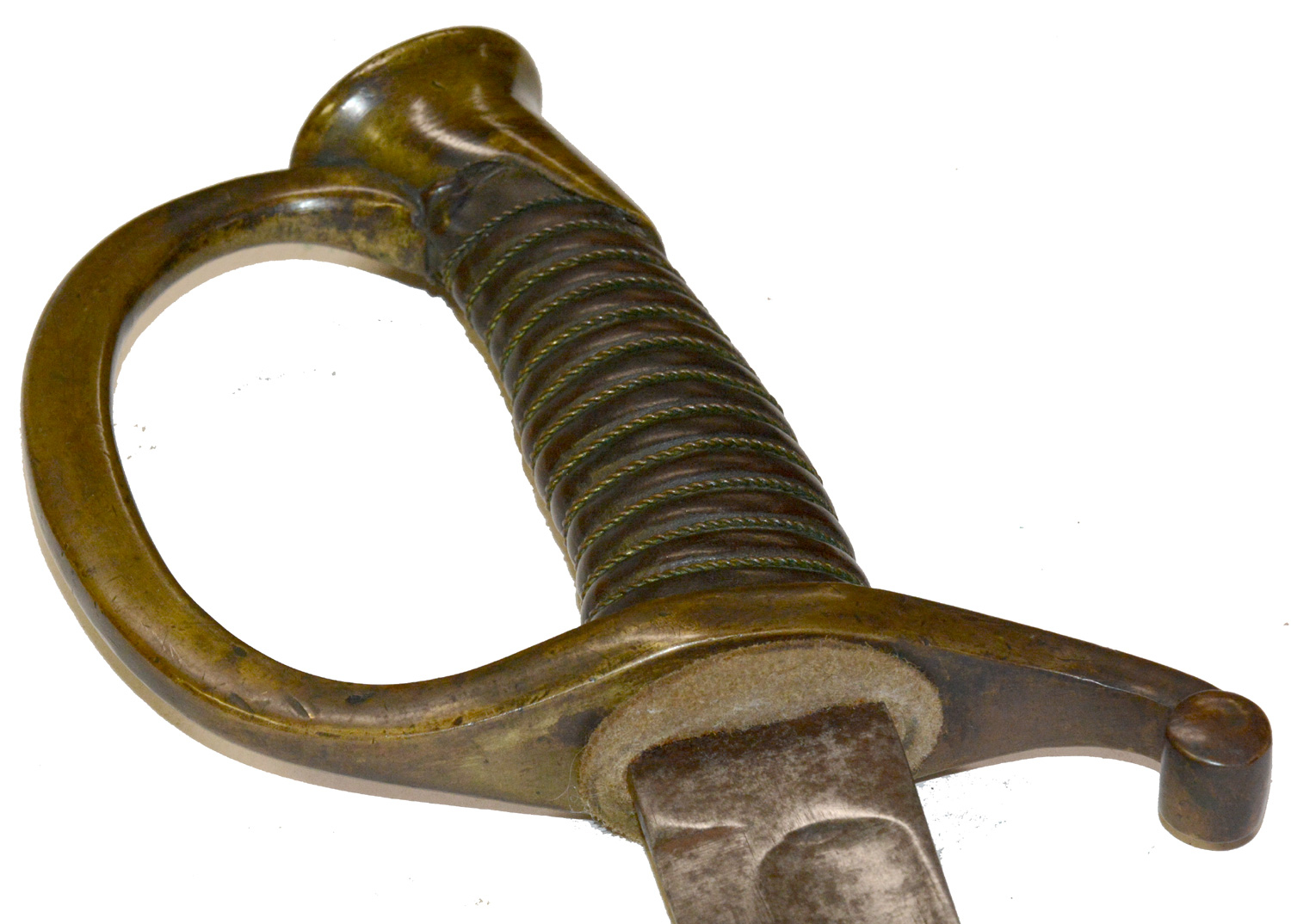

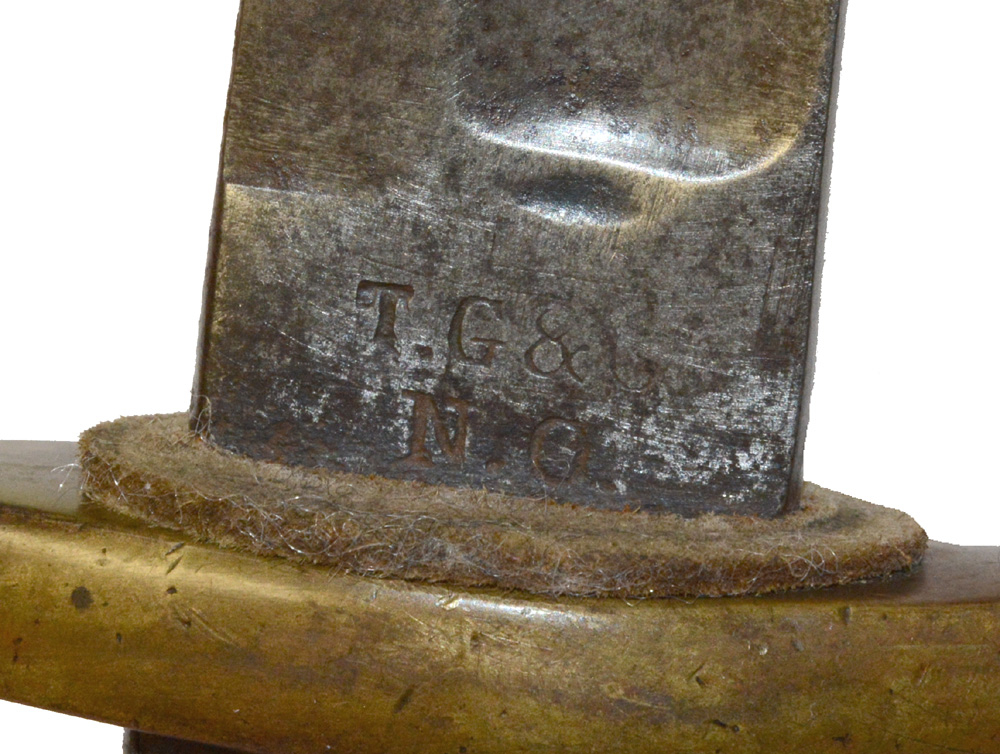




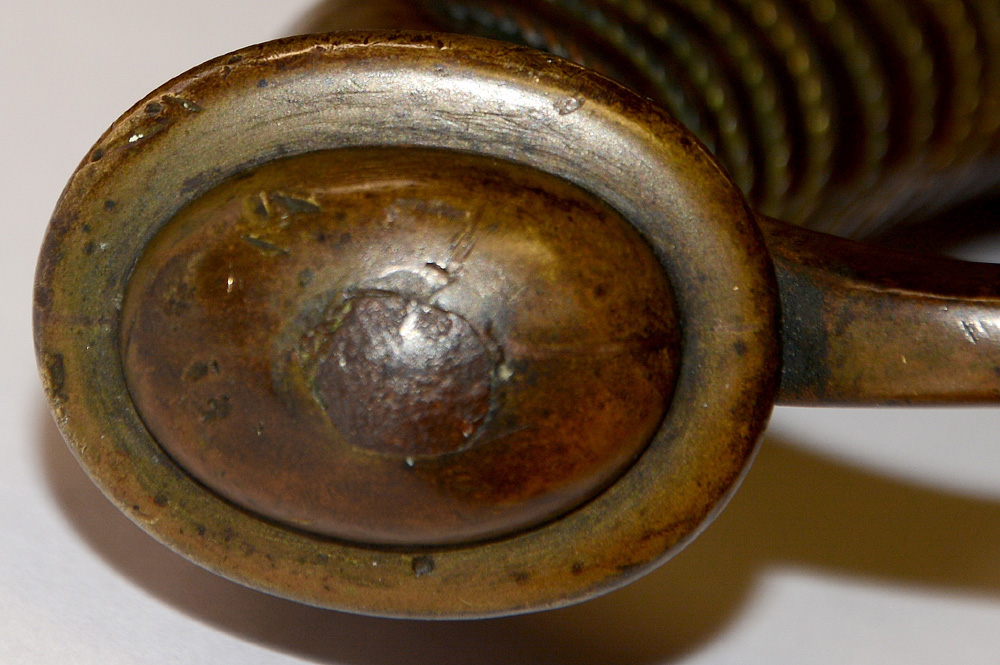
$8,750.00 SOLD
Originally $9,750.00
Quantity Available: None
Item Code: 2021-1034
This is a very attractive Confederate light artillery saber, complete with brass scabbard and exceptionally nice grip, made and marked by Thomas, Griswold and Company of New Orleans. This would date from the formation of the company in July 1861 to the fall of New Orleans in May 1862, but they had decades of experience in military and luxury goods, which shows in the quality of their work. This follows the standard configuration of the U.S. M1840 light artillery saber, though with brass instead of steel scabbard. The scabbard has an attractive untouched patina showing off a high copper content with more mellow tones and slightly lighter ring bands. The hilt shows the high dome pommel typical of the company’s work and the twisted brass wire binding and leather grip wrap are in place. The blade pad under the guard is correct, but a modern replacement. The blade shows a stopped fuller that, although a little uneven at the ricasso, shows the company’s experience in manufacture as well as merchandising.
The blade shows no pitting, has a good edge with no nicks, and a good point. The metal is smooth and a muted silver in color mixed with thin gray areas, a few more toward the hilt mixing with some brown spots, and lighter toward the tip. The markings on the reverse ricasso are very good: “T.G. & Co. / N.O.” with only the upper part of the “C” and right of the “o” a bit light. The scabbard shows one very small ding on reverse flat at the drag and one on the edge. The lower edge shows a little rubbing between the bands from handling. The hilt has a nice untouched, medium patina with some appropriate age darkening. The inner curve of the pommel on the obverse shows a little roughness and a small push to the grip near the junction of the knucklebow and the edge of the peening of the tang on the pommel cap is uneven, indicating something struck it or it fell against something, but it certainly happened in period, has not disturbed the patina, and is not very noticeable and the sword is tight.
The company, well respected among collectors for the quality of their work, descended from James N. Hyde & Co. established in New Orleans in 1816/1817 as a branch of Hyde & Nevins of New York City. Slight changes in partners and firm names disguise a continuity of the business through descendants and relatives that carried the business into the twentieth century. The partnership of Hyde & Nevins (cousins) dissolved in 1819, but in the meantime, Hyde had been joined by C.W. Goodrich (brother-in-law) in 1818. By 1829 they were partners as Hyde & Goodrich. Their sons (E.G. Hyde and W.M. Goodrich) became involved in the firm, as did brothers-in-law of those sons. By 1861 the firm included Henry Thomas, Jr., brother-in-law of the younger Hyde, and A.B. Griswold (welcomed as partner in 1853,) brother-in-law to the younger Goodrich. In 1861 Hyde was living in New York City and withdrew after the bombardment of Fort Sumter, leaving the firm to be renamed again, as Thomas, Griswold & Company, which included Goodrich and two more minor partners, H. Ginder and A.L. Abbott.
James N. Hyde had dealt in “military articles” along with watches, jewelry, plated ware while still in New York. Hyde and Goodrich included fine arms for sportsmen, but their broader business was luxury goods for the citizens of New Orleans and the planter elite, advertising in other southern cities and dealing in goods manufactured by themselves as well as imported from the north and from Europe, including jewelry, watches, military and fancy goods, plated and silver ware (tea sets, coffee sets, silverware, and the like,) lamps, guns, pistols, etc. Military goods naturally took center stage in 1861. They advertised Mississippi, Sharps and Enfield rifles and even set up a rifle factory, but are best known for officers’ swords, sergeant’s swords, sabers, Bowie knives, officers’ belts, plates, sashes, etc., some imported, others manufactured by themselves, and sold both retail and wholesale to other dealers, including Hayden and Whilden of Charleston, who applied their own markings to light artillery sabers like this one. During the federal occupation they sued to protect their business from seizure under the Confiscation Act, and were successful, though likely at the cost of signing loyalty oaths: Thomas died in 1864, by which time Griswold is recorded as signing the oath. He returned to business in 1865 as A.B. Griswold & Co., which lasted at least until 1924 and was well regarded for its silver.
This is a great example of a Confederate saber by a well-known maker. [sr] [ph:L]
~~~~~~~~~~~~~~~~~~~~~~~~~~~~~~~~~~~
THIS ITEM, AS WITH ALL OTHER ITEMS AVAILABLE ON OUR WEB SITE,
MAY BE PURCHASED THROUGH OUR LAYAWAY PROGRAM.
CLICK HERE FOR OUR POLICIES AND TERMS.
THANK YOU!
Inquire About SCARCE CONFEDERATE LIGHT ARTILLERY SABER BY THOMAS, GRISWOLD AND COMPANY, NEW ORLEANS, IN VERY GOOD CONDITION
Most Popular
Historical Firearms Stolen From The National Civil War Museum In Harrisburg, Pa »
Theft From Gravesite Of Gen. John Reynolds »
Selection Of Unframed Prints By Don Troiani »
Fine Condition Brass Infantry Bugle Insignia »
British Imported, Confederate Used Bayonet »
Scarce New Model 1865 Sharps Still In Percussion Near Factory New »
featured item
VERY SCARCE SWAN CONTRACT VIRGINIA MILITIA REGIMENTALLY MARKED MUSKET, CIRCA 1799: COMPANY C, 54th REGIMENT, NORFOLK BOROUGH
This musket follows the general lines of a British Short Land Pattern musket, but bears no British maker, ordnance, or proof marks. The lock is a two-screw lock with gooseneck hammer, rounded pan and no external bridle. The lockplate is stamped with… (1000-0255). Learn More »


